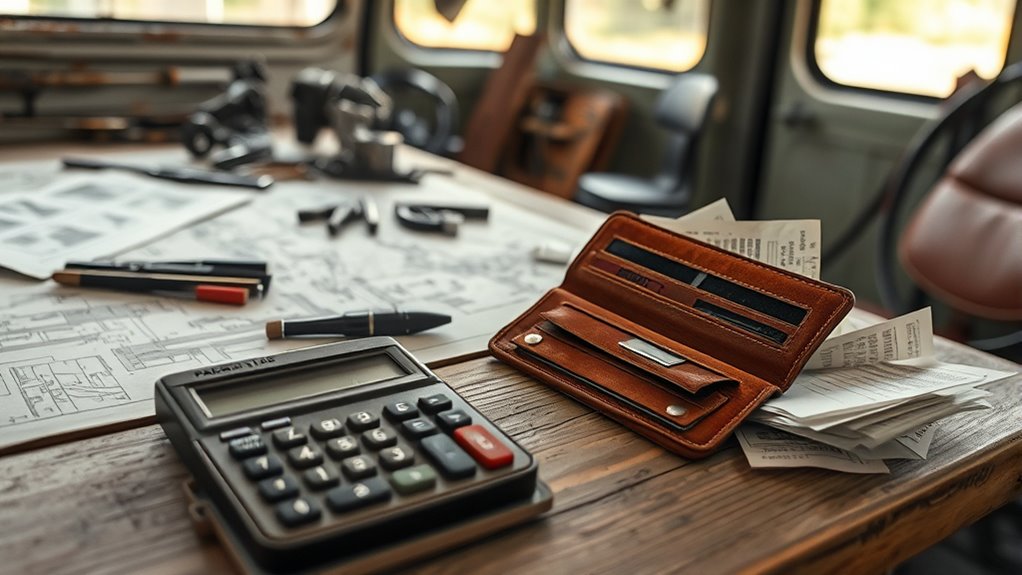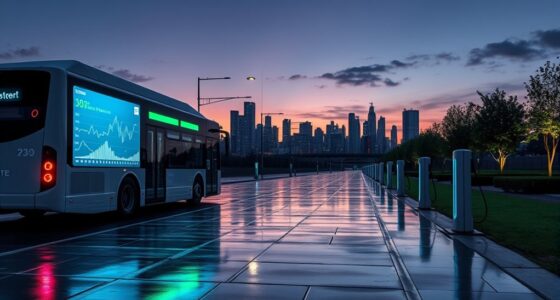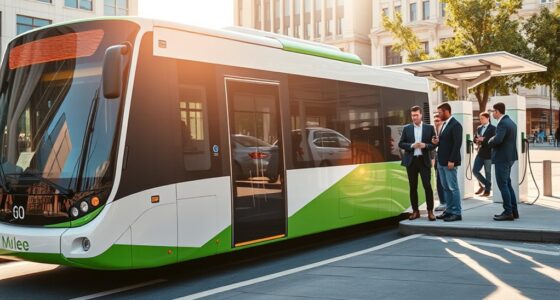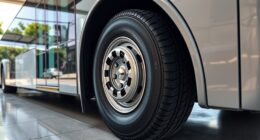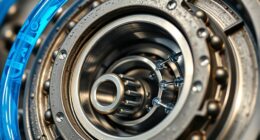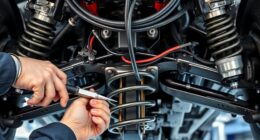Budgeting for a VW Bus restoration varies widely depending on the condition, parts needed, and how authentic you want it to be. Expect costs to range from a few thousand to tens of thousands of dollars, especially if you encounter unexpected repairs like rust or frame issues. Save at least 10-20% for surprise expenses and explore sourcing options for parts. By planning carefully, you’ll keep your project financially manageable — and there’s more to weigh if you keep exploring.
Key Takeaways
- Assess overall condition to estimate repair costs, focusing on rust and frame issues that are more expensive to fix.
- Source original or aftermarket parts from reputable vendors, comparing prices and factoring in shipping costs.
- Budget for necessary tools, equipment, and materials like paint and upholstery to avoid unexpected expenses.
- Allocate 10-20% of your budget for contingencies to cover unforeseen repairs and price fluctuations.
- Keep detailed records of expenses and plan thoroughly to prevent financial surprises during the restoration.
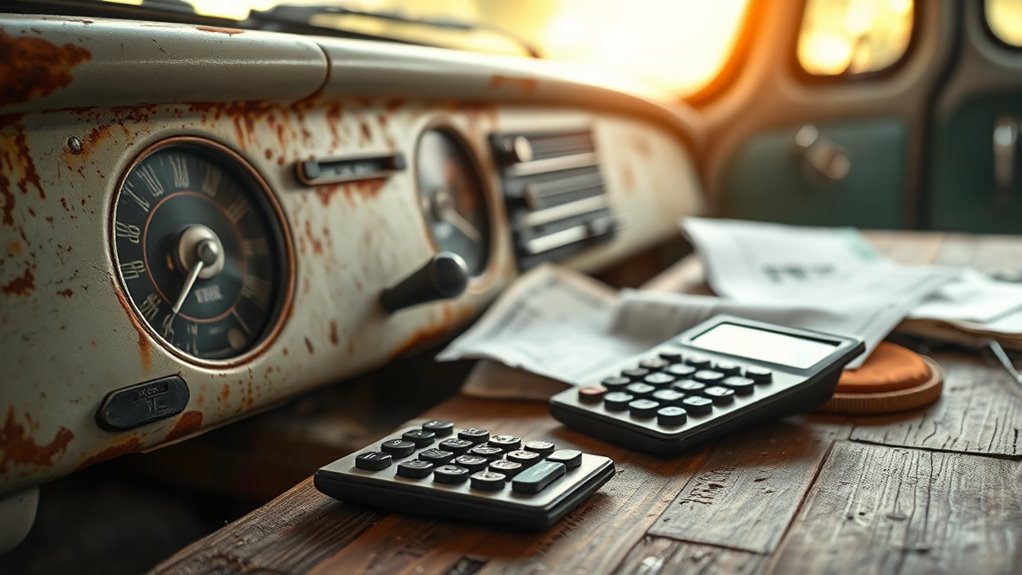
Restoring a VW Bus can be an exciting project, but without proper budgeting, it can quickly become overwhelming. One of the first things you need to contemplate is the overall restoration costs. These costs can vary widely depending on the condition of your bus, the extent of the repairs needed, and the level of authenticity you aim to achieve. It’s essential to set realistic expectations early on and prepare for unexpected expenses that may crop up during the process. Keep in mind that some repairs might be more costly than anticipated, especially if you encounter rust or frame issues. Having a clear budget helps you prioritize repairs and avoid financial surprises mid-project.
Proper budgeting is key to a successful VW Bus restoration.
Another critical aspect of budgeting is parts sourcing. Finding the right parts at the right price can make or break your restoration project. Original parts tend to be more expensive and harder to locate, especially for older models. You might need to explore various sources, such as salvage yards, online marketplaces, or specialty vendors. Sometimes, you’ll find compatible aftermarket parts that save you money without sacrificing quality. It’s wise to compare prices across multiple sources and factor in shipping costs, as these can add up quickly. Remember, buying from reputable suppliers ensures you get durable, well-fitting parts that will stand the test of time.
When planning your budget, don’t forget to include tools and equipment you might need. Restorations often require specific tools, some of which you might not already own. Renting or purchasing these tools should be part of your financial plan. Additionally, consider costs related to paint, upholstery, and interior details if you want a complete restoration. These elements can considerably impact your overall expenses.
It’s also smart to build a contingency fund into your budget—aim for at least 10-20% extra. This cushion covers unforeseen repairs, price increases, or parts shortages. Without it, you risk halting your project once unexpected expenses arise. Staying organized with receipts and invoices helps track your spending and stay within your limits.
Moreover, regular use of glycolic acid products can play a significant role in maintaining healthy skin during your restoration process, especially when exposure to dust and other irritants is common. Ultimately, thorough planning and honest assessments of your finances ensure your VW Bus restoration stays on track. Keep in mind that the more detailed your budget, the less likely you are to face surprises. By carefully considering restoration costs and parts sourcing, you’ll be better prepared to enjoy the process without stressing over money. Restorations are as much about patience and persistence as they are about budget management, so stay flexible, and you’ll turn that classic VW Bus into a beautiful, restored vehicle you can be proud of.
Frequently Asked Questions
What Are the Most Common Hidden Costs in VW Bus Restorations?
When restoring a VW Bus, you might overlook hidden costs like restoration insurance, which safeguards your investment, and antique valuation, affecting insurance and resale. Unexpected expenses often include rust repair, parts sourcing, and labor. These costs can quickly add up, so it’s wise to budget extra for unforeseen issues. Being aware of these hidden expenses ensures you’re financially prepared and keeps your restoration project on track.
How Long Does a Typical VW Bus Restoration Take Financially?
Think of restoring your VW Bus like planting a garden—patience grows the best blooms. A typical restoration timeline varies from 3 to 12 months, depending on the project’s scope. Your cost estimation must include parts, labor, and unexpected expenses. Staying flexible helps avoid surprises, and understanding the full timeline allows you to plan financially. Remember, rushing may cost more than waiting for the right fit.
Are There Affordable Alternatives to Original VW Parts?
You can find affordable alternatives to original VW parts by exploring aftermarket options and sourcing alternatives from reputable suppliers. Aftermarket parts often offer quality replacements at lower prices, helping you stay within your budget. Research online, join enthusiast forums, and visit local auto parts stores to discover options. Just guarantee that the parts meet safety and quality standards to keep your restoration authentic and reliable without overspending.
How Can I Estimate Unexpected Repair Expenses Accurately?
Imagine expecting clear skies but facing unpredictable storms—that’s how unexpected expenses can hit your repair estimates. To estimate these costs accurately, you should research common issues for VW buses and add a contingency fund of 10-20%. Regularly inspect parts, keep detailed records, and consult with experienced mechanics. This way, you prepare for surprises, ensuring your restoration stays on track financially, even when the road gets bumpy.
What Financing Options Are Available for Restoration Projects?
You can explore various financing options for your restoration project, including loan options like personal loans or specialized restoration loans that offer manageable repayment plans. Leasing opportunities might also be available through equipment or vehicle leasing companies, giving you flexibility without full ownership upfront. Be sure to compare interest rates and terms to find the best fit for your budget, ensuring you can fund your project without financial strain.
Conclusion
Restoring a VW Bus is like chasing a rainbow—beautiful and full of promise, but you’ll need a sturdy pot of gold to make it real. Keep your budget grounded, and don’t let enthusiasm turn into financial quicksand. With careful planning and a clear eye on costs, your dream ride can shift from a distant mirage to a vibrant reality. Stay savvy, stay patient, and soon enough, you’ll be cruising down memory lane in your restored classic.
